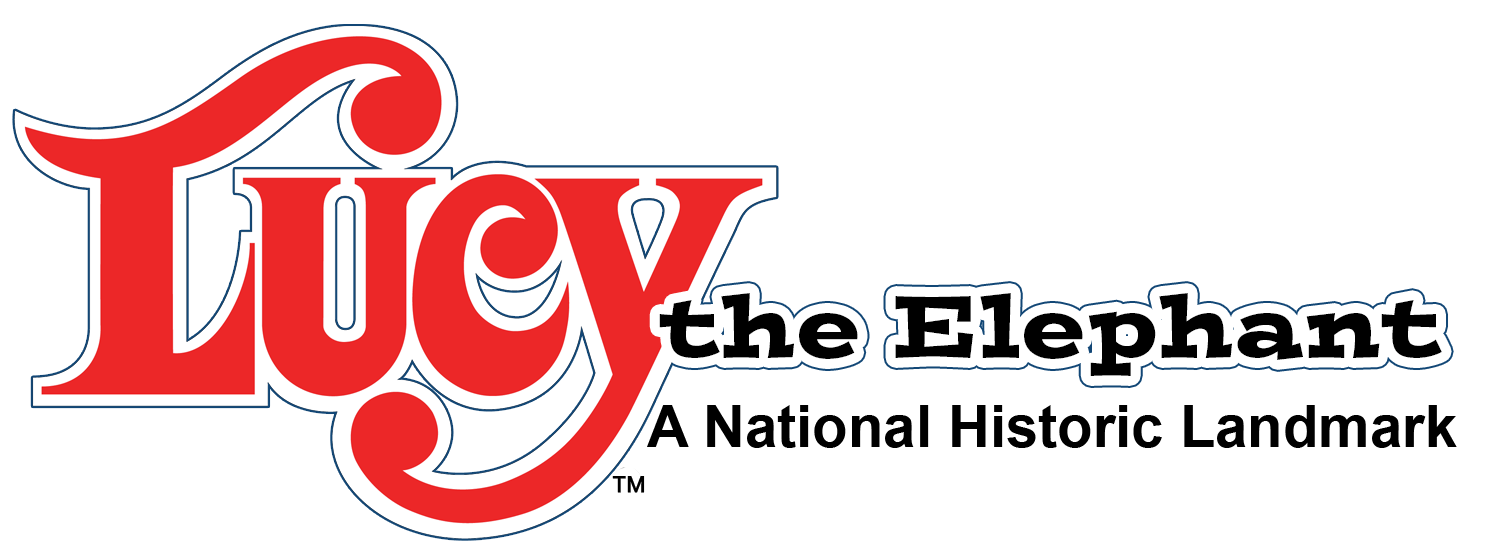Chapter 1 – Elephant to Starboard
The outer islands of the Southern Jersey coast are romantically entwined with legends of pirate chieftains fighting battles to the death on sandy beaches, of buried treasure beneath every dune, of whalers rushing for boats when the cry of “Thar’ She Blows” echoed from lookout stations. Mysterious cargoes landed in the dead of night and were quickly […]
Chapter 2 – The Gertzens
The Gertzens, who were to play a prominent part in the early history of both Lucy the Elephant and South Atlantic City (now Margate), were an interesting family. Anton Gertzen, the patriarch of the family, was born in 1823 in the German State of Prussia, which is now part of the Federal Republic of Germany. In 1844 Anton […]
Chapter 3 – One of Three
Lucy the Elephant is one of three such structures designed by James V. Lafferty. It is the only one still intact. Lucy’s nearest relative was the Light of Asia, a 40-foot wooden Elephant built on land owned by the Neptune Land Company, near the beach in what is now the Borough of South Cape May. This […]
Chapter 4 – The Turkish Pavilion
The Turkish Pavilion, constructed in 1876 for the Centennial Exhibition in Philadelphia’s West Fairmount Park, had attracted Anthony Gertzen’s eye and when it became available after the close of the fair, he purchased the building, had it disassembled into numbered sections and moved to Margate, where it was carefully restored and reconstructed behind the famous […]
Chapter 5 – Tourist Camp
John Gertzen died in 1916, leaving Sophia with two young children to raise and support. To add to the family income, she began a tourist camp which was to become so popular that it required 40 tents to satisfy the demand. Others began to copy Sophia’s successful venture until a “Tent City” arose along the waterfront. The […]
Chapter 6 – The Committee
In 1969, Edwin T. Carpenter and a group of Margate citizens formed the Margate Civic Association. One purpose of the Association was to find a way to save the decaying old Elephant landmark from demolition, as a developer was negotiating the purchase of the land upon which Lucy stood. The City of Margate owned a piece […]
Chapter 7 – Save Lucy
The challenge of moving the Elephant was presented to the Civic Association and thus the Save Lucy Committee was formed. The house-moving firm of Mullen and Ranalli was hired to prepare the structure for the move at a cost of $9,000. Feriozzi & Sons, a local area concrete contractor, was hired to prepare an especially designed […]
Chapter 8 – Moving Date Set
The morning of July 20, 1970, was set as “moving day”. It looked like all obstacles had been removed and that the giant undertaking would proceed according to schedule. Then came a jolt that was not anticipated. Three days before the moving date the committee was served with a legal injunction to prevent the relocation of […]
Chapter 9 – New Challenge
Once Lucy was firmly anchored in her new location, repaying the loan for the move and financing the restoration became the next challenge of the Save Lucy Committee. The publicity of moving the giant Lucy went over the national and international wire services, creating a flow of donations to the Save Lucy Committee from worldwide good […]
Chapter 10 – Lucy Opens
The work accomplished with the $124,000 was sufficient to permit tours inside Lucy to begin again by summer of 1974. The committee members acted as guides. A ribbon-cutting ceremony was held with the Mayor and Commissioners attending and press stories went out on the wire services. “LUCY THE MARGATE ELEPHANT OPEN FOR TOURS” The Committee again […]
Chapter 11 – In Appreciation
No history such as this could have been completed without the help of many people and organizations, library reference departments, family scrapbooks and public documents. To those sincere folk and fans of Lucy who aided this endeavor we want to express gratitude for their interest and support. We would especially like to thank Mary Lafferty Garrison […]


